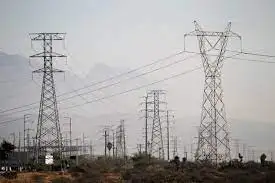Solar plan calls for raising rate, adding FIT
LOS ANGELES, CALIFORNIA - Los Angeles Mayor Antonio Villaraigosa has proposed charging a utility-rate surcharge and using some of the proceeds to pay for a solar feed-in tariff like those that have boosted the technology's adoption in Europe and Canada.
The feed-in tariff program would pay solar-electric system owners in the city an amount higher than the market price for generating electricity. The 20-year agreements that would be offered would be intended to cover the cost of the electricity produced and a "reasonable" profit.
Feed-in tariffs have been successful in stimulating solar-electricity use and creating solar manufacturing jobs in Germany, Spain and Japan – all of which rank well above the United States in the adoption of solar power. A new feed-in tariff begun in the fall of 2009 in Ontario, Canada, has also proved popular.
In the United States, a feed-in tariff offered in Gainesville, Florida, in 2009 was quickly oversubscribed. A similar payment program operates in Vermont but pays slightly less than the 32 cents per kilowatt-hour that Gainesville provides solar owners. Vermont also has less annual sunshine than Florida, meaning owners of equally sized systems in Vermont produce less electricity and receive less money overall. But a recent decline in solar equipment costs could put Vermont buyers on terms equal to or better than those in sunnier states.
Other U.S. states and jurisdictions are also considering proposals for feed-in tariffs. Although feed-in tariffs are easy for consumers to understand and can assure a long-term profit, the amount may be less than some owners may achieve under solar rebate programs that are commonly used in the United States.
The Los Angeles mayor's plan would require the Los Angeles Department of Water and Power's 1.45 million electricity customers to pay 2.7 cents more per kilowatt-hour of electricity. The city has a tiered rate structure and officials estimate that the average residential electricity bill would rise about $2.50 or $3.50 a month. Small-business owners, however, would pay as much as $54 per month more, an increase of about 20 percent.
Of the 2.7-cent increase, 0.7 of a cent would go toward a dedicated fund to pay for the feed-in tariff and programs related to energy efficiency. The mayor's office did not specify the use of the other 2 cents. Prospects for the plan are uncertain and opposition is likely.
Despite having ambitious plans for significant and rapid growth in solar power, Los Angeles has had fitful results so far. The municipal utility 's current plan calls for about 1,280 megawatts of solar capacity to be added to the grid by 2020, but it has made little progress. The city has only about 51 megawatts of solar PV capacity now.
An existing solar rebate offer has been weakly received, resulting in the adoption of only 3 megawatts of grid-tied solar production capacity out of a goal of 54 megawatts by the middle of 2014.
The feed-in tariff plan is based on research done by the Luskin Center for Innovation at the University of California, Los Angeles.
"A feed-in tariff initiated in this city has the potential to change the landscape of Los Angeles," said J.R. DeShazo, director of the Luskin Center, in a news release. "If incentivized appropriately, the program could prompt individual property owners and businesses to install solar panels on unused spaces, including commercial and industrial rooftops, parking lots and residential buildings. Our projections show that the end result would be more jobs and a significant move to renewable energy with no net cost burden to the city."
The Luskin Center has not yet released a report on which the proposed solar feed-in tariff is to be based.
Related News

Residential electricity use -- and bills -- on the rise thanks to more working from home
NEW YORK - Don't be surprised if your electric bills are looking higher than usual, with a sizable increase in the amount of power that you have used.
Summer traditionally is a peak period for electricity usage because of folks' need to run fans and air-conditioners to cool their homes or run that pool pump. But the arrival of the coronavirus and people working from home is adding to amount of power people are using.
Under normal conditions, those who work in their employer's offices might not be cooling their homes as much during the middle of the day or using as…




